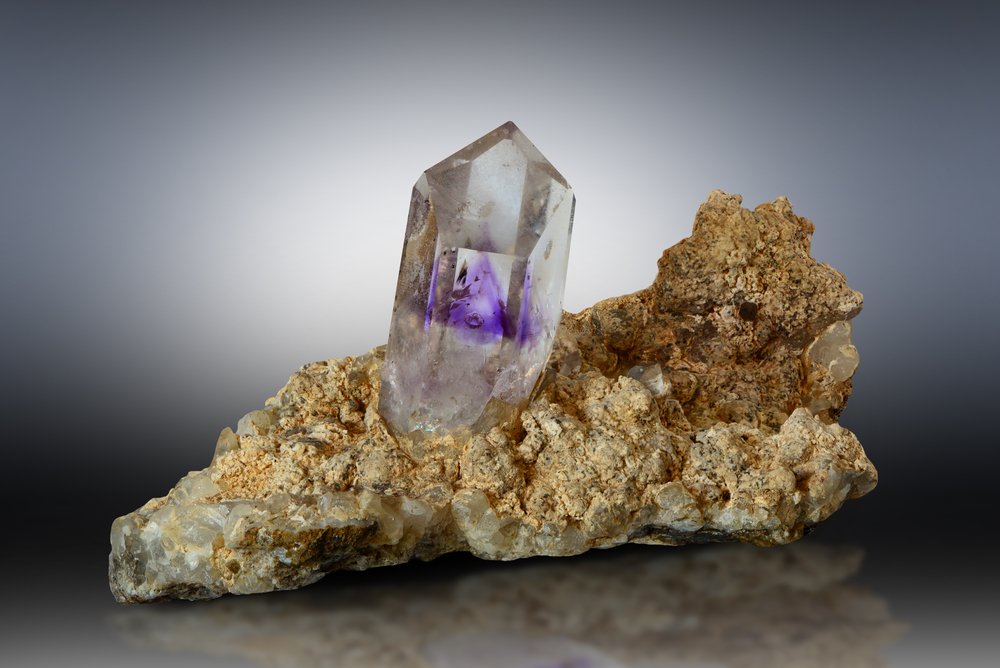Crystals are like snowflakes in the sense that no two are exactly the same. The way a crystal or a group of crystals looks, including its shape, is called its “habit.” And these vary significantly because factors like temperature and pressure play a huge role in how a crystal forms. So, when you see a crystal, its unique “habit” tells you a story about where and how it grew.
In this article, we’re going to list a few examples of some of the different types of crystal growth along with examples of each one.
1. Needlelike or “Acicular”

Thin elongated crystals are considered to have an “acicular” or “needlelike” habit. This scolecite on quartz specimen is a classic example of a crystal with radiating needles.
2. Botryoidal

This chalcopyrite specimen grows outward from the center which results in rounded nodules that look like “grape clusters” or “botryoidal.
3. Prismatic

“Prismatic” crystals like this beryl specimen are significantly longer in one direction than in the other two directions. They have short hexagonal face on each end and long, rectangular prism faces.
4. Coralloid

Aragonite can sometimes take on a similar appearance to coral, or coralloid (coral-like) habit.
5. Specular

Hematite is known for occurring in several different habits. When it forms in shiny, reflective crystals like in the hematite specimen below, it’s said to have a “specular” habit.
6. Equant

Equant crystals are those whose length, width, and depth dimensions are approximately equal, making them appear roughly the same size in all directions, similar to a sphere or cube. Garnets are a great example of this formation.
7. Foliated

Foliated minerals are characterized by layers or sheets, which give them a leaf-like appearance. This structure is typical of minerals such as mica, which can be split into thin, flexible sheets.
8. Phantom Growth

Phantom growth is when there appears to be a crystal within a crystal due to where earlier stages of growth are encapsulated by later ones. These “phantoms” show up as ghostly outlines or layers within the crystal. This occurs often in quartz.
9. Hopper Growth

Hopper growth in crystals is characterized by a skeletal or frame-like appearance, where the outer edges of the crystal grow faster than the inner surfaces, leading to a stepped, hollow structure.
10. Dendritic

Dendritic crystal growth resembles branching tree patterns, often seen in minerals like manganese and iron oxides that form in fractures or solutions.
11. Cubic
Cubic crystal habit refers to crystals that grow into shapes with six square faces, each face meeting at right angles, resembling a cube. This growth form is characteristic of minerals like pyrite and halite.


